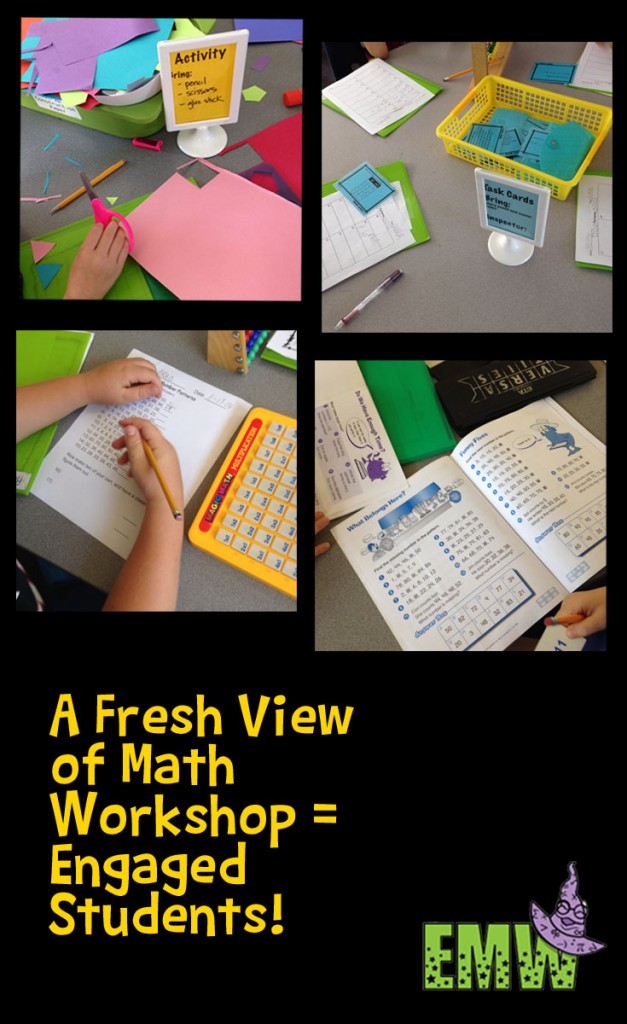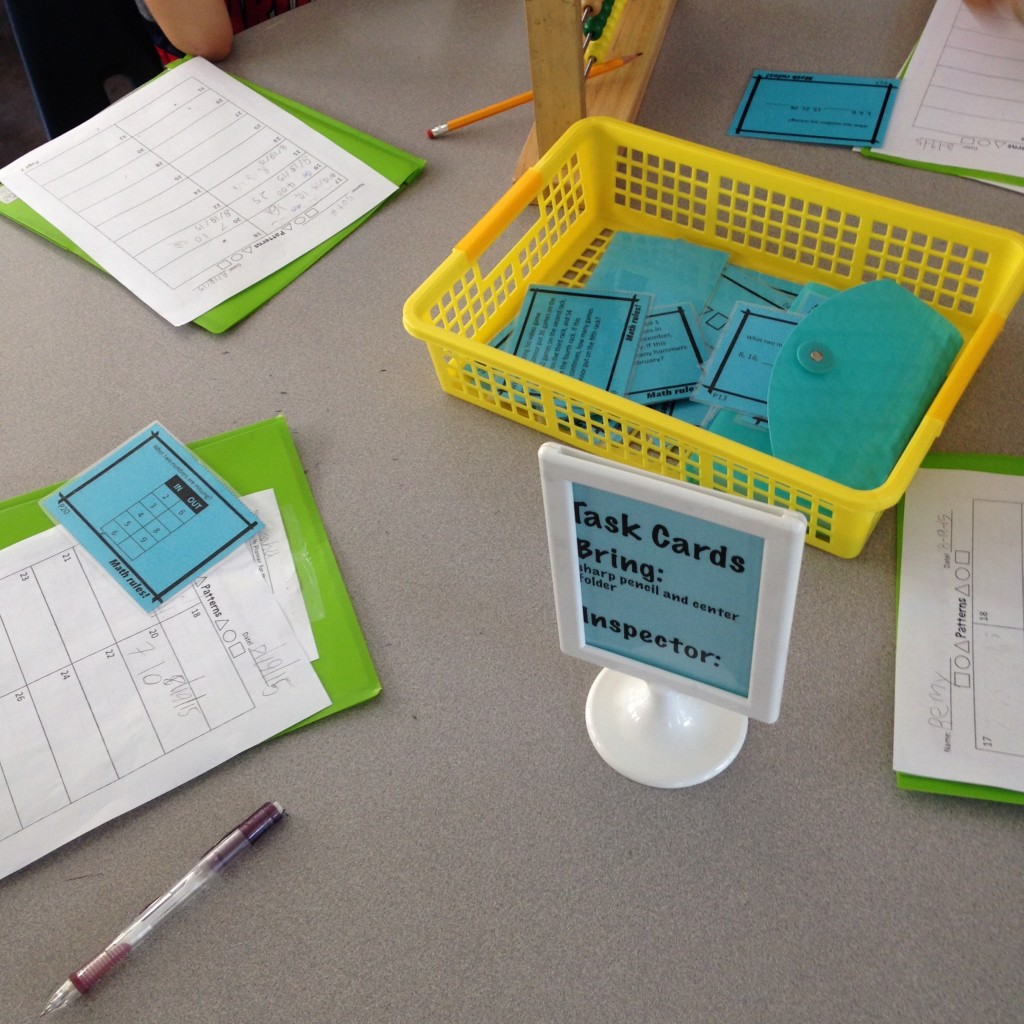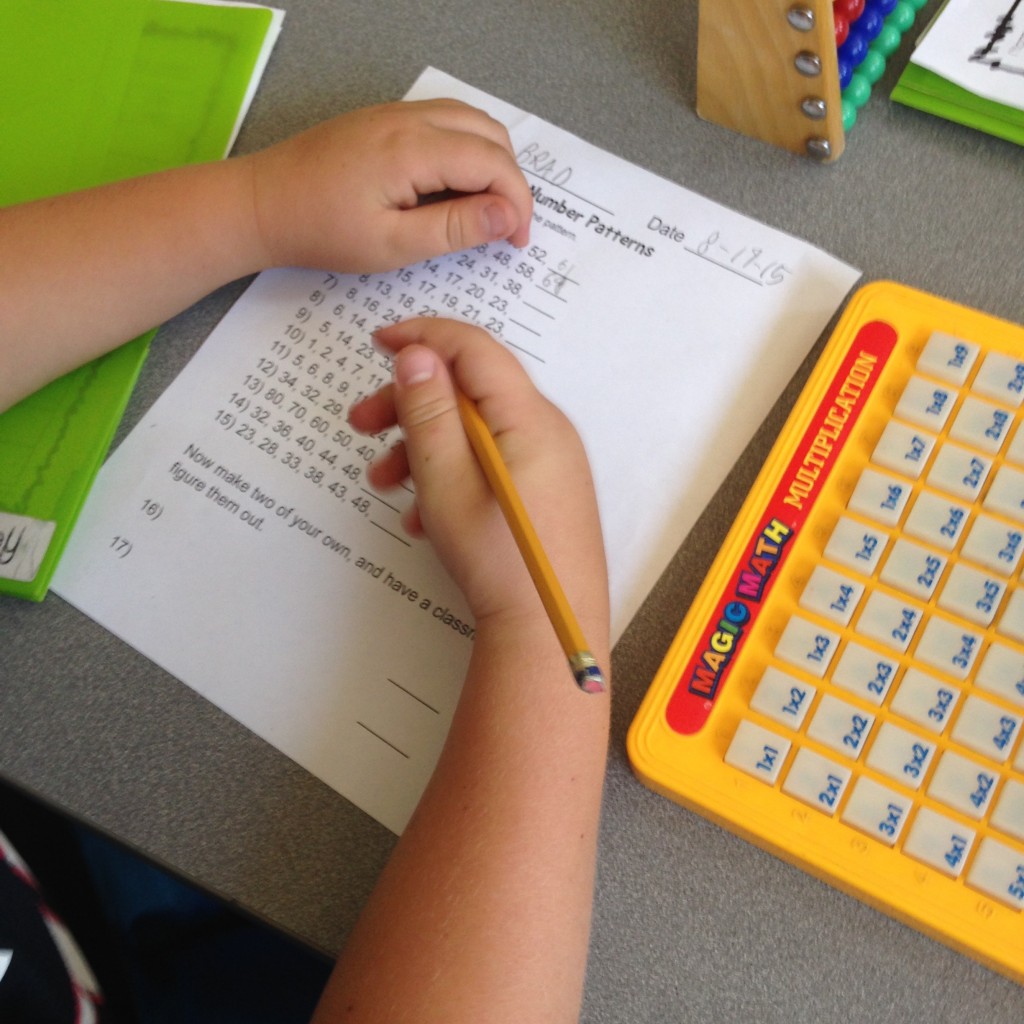 I love to differentiate my math time. My students are more engaged and feel more confident when math is at their level. So challenges can be reached!
I love to differentiate my math time. My students are more engaged and feel more confident when math is at their level. So challenges can be reached!
Here is an overview of how I teach my 2-3rd grade math class. In subsequent posts I will go into more detail of each part. For a bit of background, I have 22 students and about an hour of math a day. I need to differentiate as I have 2-3rd graders, but most teachers probably have a similar range of math levels in their classes.
Schedule:
5 – 15 minutes – Whole class lesson
30 – 45 minutes – Individual, partner, and small group stations
5 – 10 minutes – Whole class cleanup and wrap-up
That is usually how it goes everyday, though some days we might have the entire math time dedicated to a whole class activity, like a Pattern Party.
What I Do Differently than Math Workshop
I don’t set a timer and rotate groups from station to station. I tried that, but lost to much time in the transitions and students didn’t get a chance to finish their assignment or some students finished too early and were bored (and you know what happens when somebody gets bored). Instead students move from station to station as they see fit. This helps them learn how to manage their time and responsibility.
Everyone has a math folder. And inside this folder is an individual planner, that lists the assignments for the week. Generally most planners are the same, but I do add and subtract assignments based on levels. So students move to the station where they want to learn, and can move to another when they are finished, or want to try something else. I use IKEA signs to mark each station. They do have to finish everything during the week.
Here are the stations (with about 4 students at each):
- Activity with teacher – This is a table of 3-5 that I work with. Sometimes it’s a group that I choose, or they come to me. I sometimes have two tables of this. I can get one group started and then start another group, so I can have different levels going.

- Task Cards – Students need to complete 5-10 task cards a week. I generally use the task cards I have created as I want my students to be engaged and challenged and not just a cut-up worksheet for quick completion.

- Versatiles – I love Versatiles because they are self-correcting and there are a variety of books and levels so each student can move through at their own pace. I level these for each student to reinforce their previous learning.

- Centers – Also self-correcting activities to do basic math skills.
- Folder Work – Activity sheets that are at their level and some are related to our whole class activity, and they have to do 2-4 a week, again depending on who they are. Here is a previous blog post on how I manage that.

So there is enough room for everyone to move to whatever station they want to do. They have five days to do it (T, W, Th, F, and Mon). And when they are done they can participate in “Monday Funday” and play math games.
So here is an example of what a week would look like:
Math Topic: Patterns
Whole class activity – Recognizing patterns with a partner, I show this slideshow to the whole class and they work with a partner to try to predict what is behind the windows.
Teacher Activity – Using templates and construction paper, create your own pattern to display on our math wall.
Task Cards – Pattern Task cards. This set I made starts with the basics and gets more difficult. So I give the task card recording sheet according to their level.
Versatiles/Centers – These don’t change much with our whole class math topic.
Folder Work – A combination of pattern recognition(everyone has versions of these) as well as worksheets that are at level usually basic skills like +/-.
That’s it! I hope you find this helpful.
More details to come!
– Evil Math Wizard



